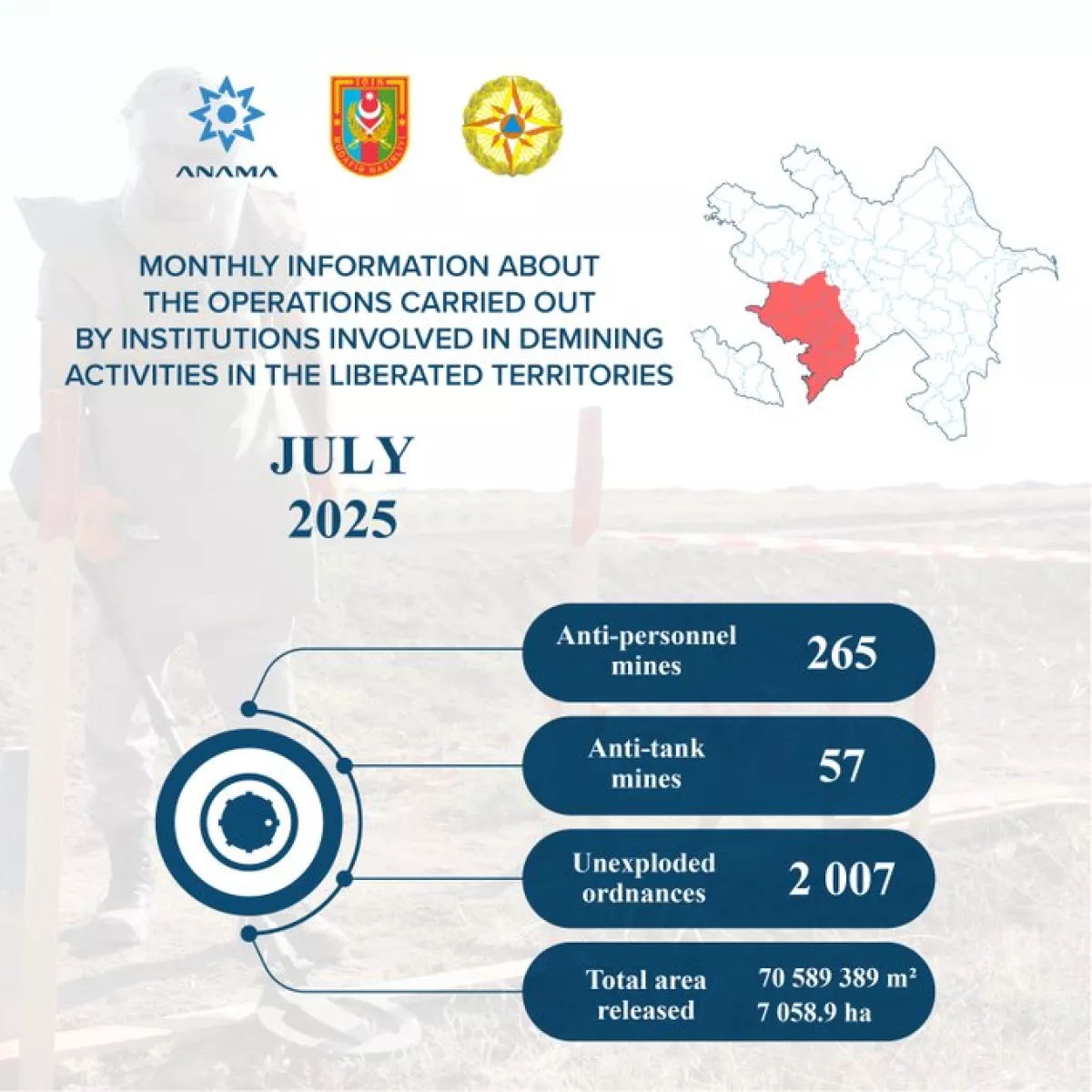Azerbaijan reports 2,329 explosives neutralized in Karabakh in July
The Azerbaijan National Agency for Mine Action (ANAMA) has released its monthly summary of demining efforts in areas liberated from Armenian occupation, revealing the ongoing scale and urgency of the mine threat in the region.
According to the agency, 7,058.9 hectares of land were cleared of landmines and unexploded ordnance (UXO) during the month of July. Operations were conducted across a broad swath of territories, including the districts of Tartar, Aghdam, Kalbajar, Khojaly, Khojavand, Lachin, Shusha, Fuzuli, Gubadli, Jabrayil, and Zangilan, as well as in the city of Khankendi.
In total, ANAMA teams discovered and neutralised 265 anti-personnel mines, 57 anti-tank mines, and 2,007 pieces of unexploded ordnance over the reporting period.

Since the end of the Second Karabakh War in 2020, landmines laid by Armenian forces have resulted in 400 deaths or injuries, pushing the total number of mine-related casualties in Azerbaijan to more than 3,400 since the early 1990s. Among the victims are hundreds of women and children.
The Azerbaijani government has consistently accused Armenia of exacerbating the crisis by refusing to hand over accurate minefield maps and by placing explosives in areas previously used by civilians, actions that have severely impeded reconstruction efforts and posed significant dangers to returning residents.
To date, approximately 140,000 hectares have been cleared, but vast areas remain contaminated, preventing the safe return of nearly 800,000 internally displaced persons. Authorities emphasise that mine clearance is a national priority, led by ANAMA and supported by substantial state funding and growing domestic capacity, including the deployment of all-women demining teams.
Nevertheless, Azerbaijani officials have repeatedly stressed that international support is essential to cope with the sheer scale of the problem and to ensure the long-term safety and rehabilitation of affected regions.
As part of post-war negotiations, Armenia handed over minefield maps for the districts of Aghdam, Fuzuli, and Zangilan, reportedly identifying coordinates for 189,000 anti-tank and anti-personnel mines. Additional maps were later provided for other liberated areas in exchange for the release of dozens of Armenian saboteurs detained in Azerbaijani territory after the war.
However, Azerbaijani President Ilham Aliyev has stated that the accuracy of the maps does not exceed 25 per cent, while ANAMA has gone further, reporting that the maps’ actual effectiveness in mine action was only around 2 per cent.
According to Azerbaijani government data, international experts estimate that demining the affected areas may take nearly 30 years and require up to $25 billion in funding.
By Tamilla Hasanova








